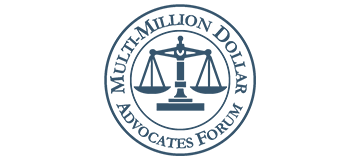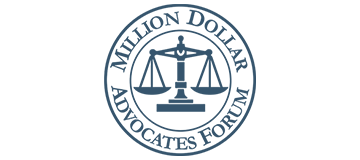You seek the services of professionals—whether they might be accountants, consultants or even Ohio medical malpractice attorneys—because they have three things you need:
- expertise in their field
- the skill to use that expertise effectively
- the judgment to do what’s right, and what’s best for their clients
The same is true when you go to a physician. You rely on the doctor’s expertise, skill and judgment to treat your affliction. Sometimes, though, a physician’s judgment falls short. A questionable decision can leave patients damaged for life, shattering their future and crippling their self-esteem.
When a doctor makes a decision that no competent doctor would make, and the doctor’s decision hurts a patient, that’s medical malpractice. and when a client suffers due to such a breach of trust, that’s when we step in.
As attorneys, we can’t repair whatever physical damage might have been done. But we can help clients hold their physician accountable for decisions that have harmed them. and when that’s done, our clients can begin to rebuild their lives.
A simple procedure goes awry—why?
Our client, Brad Pullen*, entered the hospital with a neck infection that was causing him considerable pain. When he left the hospital, he no longer had functional use of his right shoulder.
Brad suffered from a branchial cleft cyst. It is a congenital birth defect where certain tissues in the neck fail to form properly, leaving an open space called a cleft sinus where a cyst may develop. The cyst itself is not dangerous unless it becomes infected. This type of infection can be very painful, but is often treated effectively with antibiotics.
To prevent future infections, doctors usually recommend surgery to remove the cyst after the infection has been treated. The normal procedure is to use antibiotics for three to four weeks to ensure that any infection has been cleared up before attempting surgery.
In Brad’s case, however, that procedure wasn’t followed.
For a free legal consultation, call (614) 481-6000
A hasty decision results in medical malpractice
The physician who examined Brad diagnosed the branchial cleft cyst infection on a Friday. Brad was put on high-dose antibiotics immediately, and by Sunday his condition had noticeably improved. The swelling was down, and Brad’s pain was dramatically reduced.
Then the physician made a decision that has never been fully explained: He recommended surgery immediately to remove the cyst, rather than waiting the three to four weeks for the infection to clear. The problem was that traces of the infection had inflamed the tissues, making it difficult for the surgeon to see important nerves in the area where he was going to operate.
The surgeon operated on Brad the next day. While the cyst was successfully removed during the surgery, the physician inadvertently severed the spinal accessory nerve, which controls movement of the shoulder and arm.
Brad effectively lost the use of his entire right shoulder and arm.
A life derailed by negligence
Had the nerve been reattached immediately, the damage could have been minor. But after removing the cyst, the surgeon never checked to see if he had accidentally cut a nerve—something a reasonably competent surgeon would have done. A devastating injury resulted from a mistake that could have been avoided had the physician waited the appropriate amount of time to operate, or checked to see if he had done damage to nearby nerves.
Brad was just 23 at the time of the surgery and was studying to be a culinary chef. The injury to his shoulder and arm halted his pursuit of that career and severely limited other job opportunities as well. The family’s plan for raising children was also disrupted: His wife had planned on staying home and raising their three small children while Brad pursued his culinary career and provided for the family financially.
That was only the beginning. A later surgery tried to reattach his spinal accessory nerve but was unsuccessful. Brad also developed a winged scapula, a protrusion of the shoulder blade resulting from the nerve damage. That condition required surgical reconstruction of the shoulder, and years of painful physical therapy.
Click to contact our personal injury lawyers today
Hope for the future
On Brad’s behalf, we filed a medical malpractice suit against the physician. In our opinion, the suit should have been resolved quickly through negotiation with the physician and his insurance company. But recently, doctors have been winning the majority of medical malpractice cases, and that has emboldened many of them to go to trial rather than settle out of court.
Medical malpractice litigation is notoriously complicated and arduous as it is. In Brad’s case, the process took six years before he received a substantial verdict in his favor that could give him options for putting his life back on track. While the verdict doesn’t fix Brad’s shoulder, it does give him an opportunity to invest in a business, or even pursue education and training for a different career.
Complete a Free Case Evaluation form now
Results that deliver a powerful message
Hopefully, Brad’s favorable verdict will have a legacy that goes beyond this one case. It reinforces the message to physicians that their judgment is just as important as their medical expertise and skill. A high volume of patients is not what builds a healthy practice—healthy patients build a healthy practice.
Treatment shortcuts too often result in outcomes that can be life-damaging. As medical malpractice attorneys, we’ve witnessed over and over how heartbreaking that damage can be. If you think you’ve been a victim of medical malpractice, please give us a call—we’re here to help.
The outcome of any client’s case will depend on the particular legal and factual circumstances of the case.
*Names in this article have been changed to respect our client’s privacy.
Call or text (614) 481-6000 or complete a Free Case Evaluation form
















































